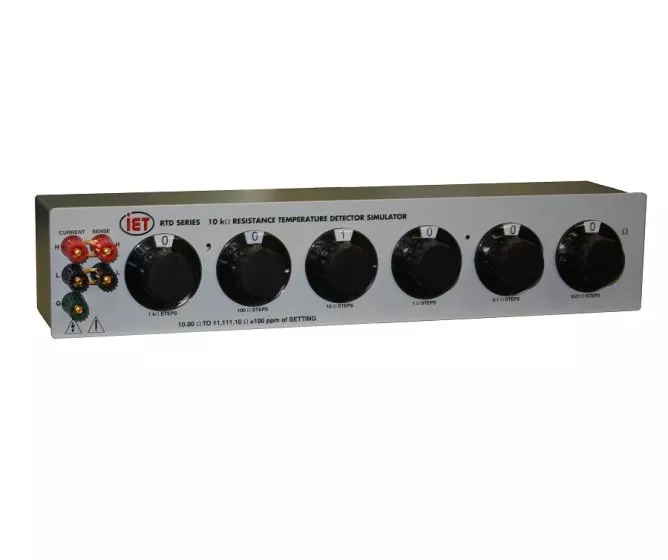Description
For high resistance transfer standards, consider the esi SR1050. For oil filled resistance transfer standards consider the SR1030.
IET Labs continues to manufacturer the SR1010 to the same exacting specs as esi/Tegam
Introduction
The esi SR1010 transfer standards consist of 12 equal resistance steps. These steps are available in increments of 1Ω (SR1010-1), 10Ω (SR1010-10), 100Ω (SR1010-100), 1kΩ (SR1010-1k), 10kΩ (SR1010-10k) and 100kΩ (SR1010-100k). The esi SR1010 provides four-terminal connections for each step or for series and parallel combinations of these resistance steps using the optional Series-Parallel (SPC102), Parallel Compensation Networks (PC101) and shorting bars (SB103).
Description
The esi SR1010 meets or exceeds all of the requirements for resistance transfer standards in precision measurement applications. It is easily configured to transfer resistances up or down a decade from their initial resistance value. When used with the connecting networks and shorting bars, it provides 1 ppm transfer accuracies.
Each transfer standard contains twelve equal value precision resistors connected in series by specially designed true 4-terminal junctions. These special junctions assure that a 4-terminal measurement of a series of resistors agrees with the sums of the individual resistors in the series. Accurate parallel connections can be made with the Parallel Compensation Network and the Shorting Bars connected to the junctions.
These standards can be connected to provide three decade values: 10 resistors in series, 10R: 9 resistors in series — parallel, 1R: and 10 resistors in parallel, R/10. The part per million accuracy is assured as the series value is equal to 100 times the parallel value to better than 1 ppm. The series — parallel value relative to either the series value or the parallel value can be found to better than 1 ppm by making a 1:1 comparison with the remaining tenth resistor and a simple calculation.
The accuracy and precision of the individual resistors also make the esiSR1010 transfer standards ideal for use as a multi-value standard resistor or reference voltage divider.
Advantages of Transfer Standards
In order to perform calibrations with a high degree of accuracy, reference standards must be employed at every range or decade of the measuring or calibration instrumentation. Clearly, this can be difficult and costly since these standards must be highly stable and their precise values must be known with a high degree of certainty and sufficient resolution.
To minimize the cost and difficulty, more practical means of performing such calibrations is to use transfer standards.
If one has a single standard that is calibrated by a national laboratory, one can then compare the transfer standards to the certified standard by ratio techniques. See our Technical Applications section for a full tutorial. The Benefits of Using Transfer Standards
Article from Xdevs.com author Illya Tsemenko, on calculation of TC on an SR1010 ESI SR1010, SR1030 and SR1050 series resistance ratio transfer standards









